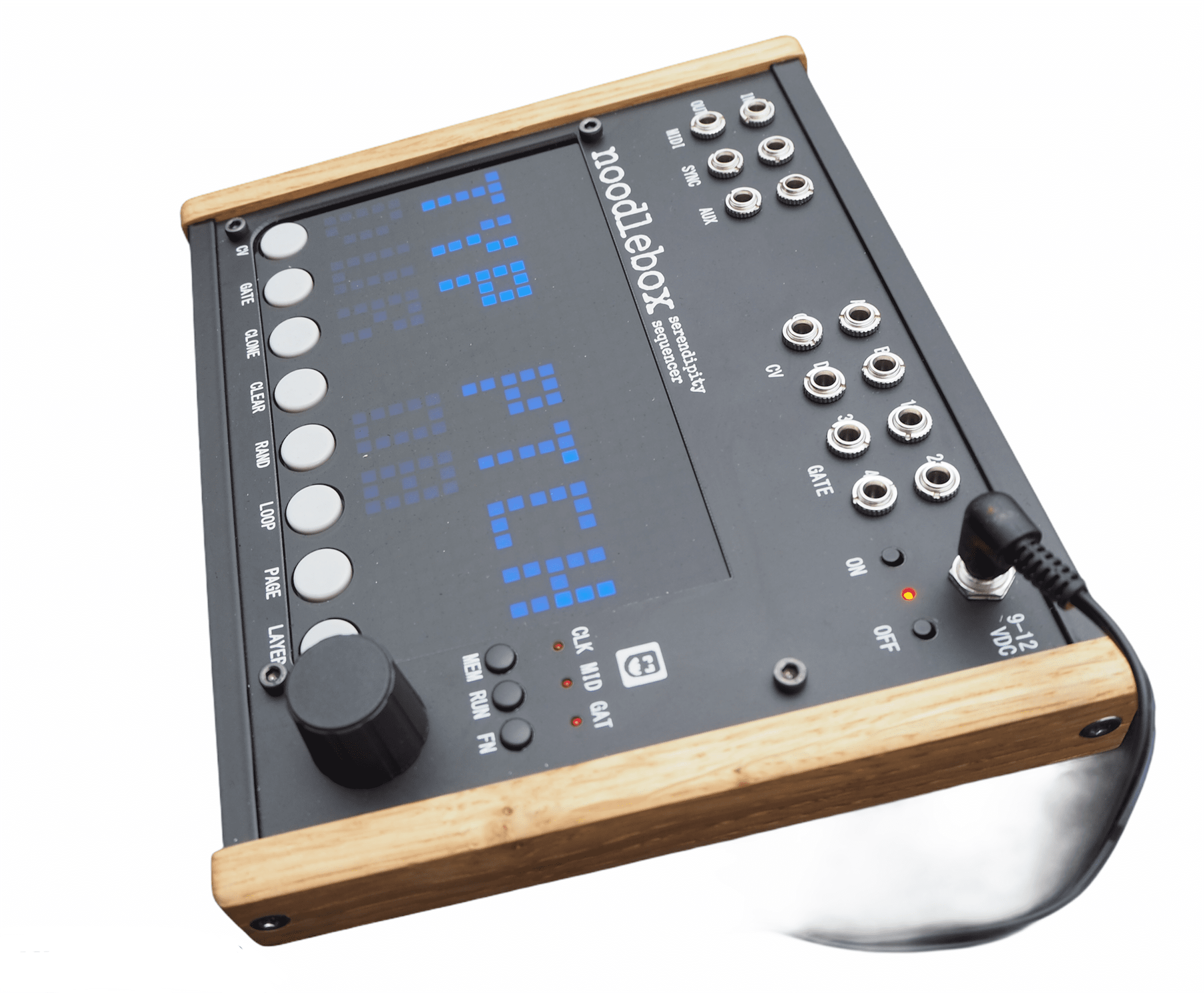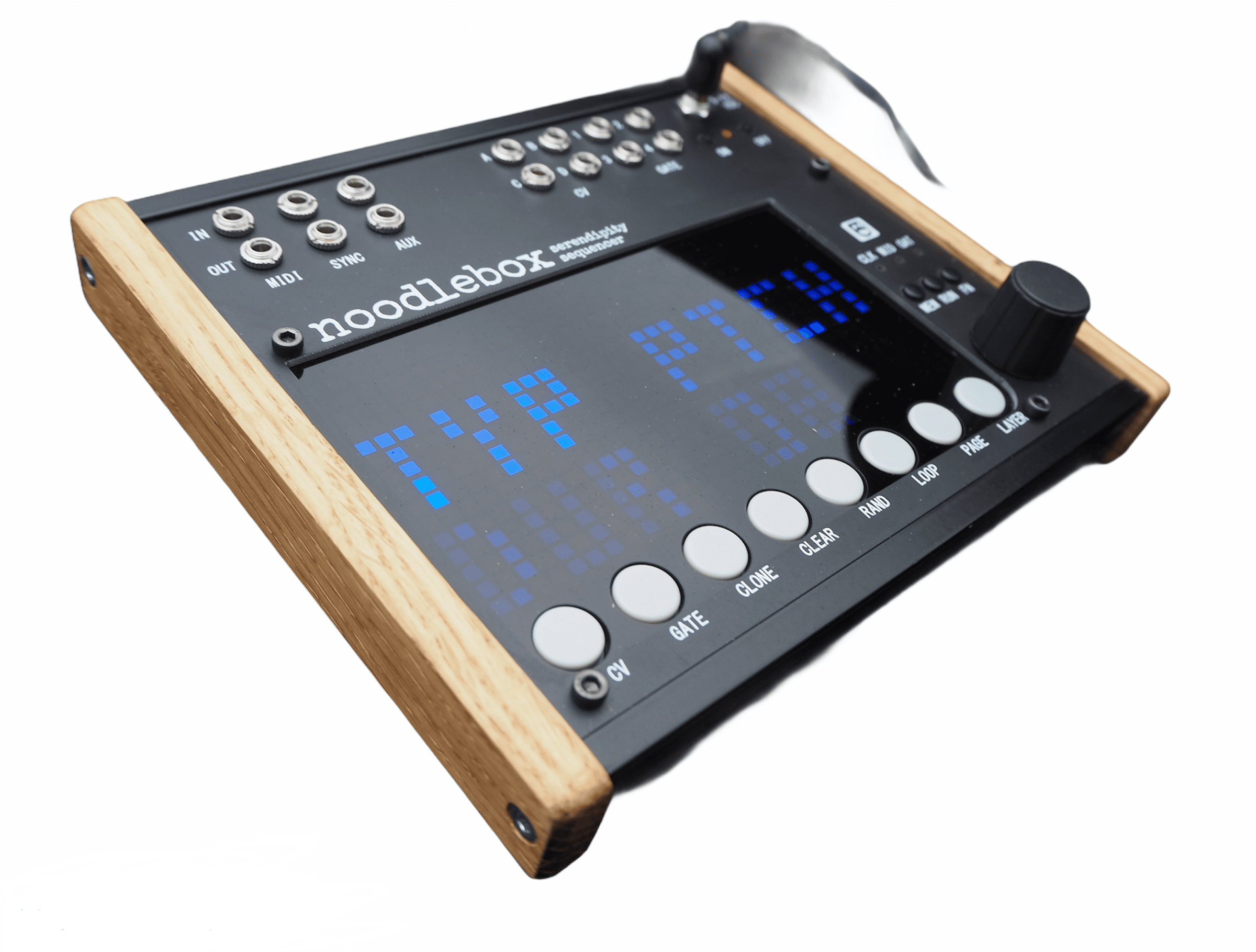Noodlebox is a four part sequencer for making electronic music. It has analog CV/Gate outputs for each part and supports MIDI.
There are independent sequencer layers, each with a CV/Gate output. Each layer runs separately to the others (although staying in sync) and has its own step count, clock division etc.
Each layer has four pages of up to 32 steps each. Pages can be used for A/B/C/D type pattern variations, for verse/chorus type song sections or chained to make a single pattern of up to 128 steps. You can cue up lists of pages for automatic cycling (up to 32 pages). Arranging pages is designed to be quick and easy to do creatively in a live setting.
Each step has a value range of 0-127 corresponding to row position of the data point in the scrolling window. This value corresponds to a chromatic or scale-forced note pitch CV (V/Oct or Hz/V output) or to a general purpose modulation CV (0 to 8V range). Freely mess with scaling modes during playback for microtonal weirdness!
User-entered CV points can be padded or interpolated into empty steps for fast creation of melodies and modulation slopes without the need to enter a value at every step. Voltage slew can be introduced between data points.
Gate points can easily be edited separately from CV points, so you can experiment with the rhythm of a fixed melody and vice-versa. The gate length (duty) is adjustable at layer level and any step can be “tied” to the next for legato play or rhythmic variation.
Gates can be set manually or by Euclidean algorithm. Each gate point can be assigned probability, retrigger/ratchet and accent (for MIDI velocity). Gate timing can be micro-offset for swing and slide effects, with or without randomness.
All layers can output MIDI notes or controller change (CC) messages, on shared or different MIDI channels. MIDI notes from an external keyboard can also be recorded and quantized into the grid while the sequence plays. Use Noodlebox as a MIDI looper just as intuitively as a guitar looper pedal.
Layers 2, 3, 4 can internally modulate the CV output of the previous layer by summing with it or overlaying it. This requires no special cable patching and can be used for automated transposition or adding simple variations to a sequence, right up to meandering microtonal craziness.
Editing features such as cloning and erasing data points, shifting patterns in pitch and timing, setting loop point and play direction, adding randomness (and taking it away again) are designed to be hands-on and creatively useful in a live setting.
Eight memory slots store the whole of the Noodlebox session (all four layers). An auto save memory slot is used when shutting down using the OFF button, so that you can pick up where you left off when you turn it on again. A special memory slot can also be prepared as a “template” for new sessions to save commonly used settings.
Noodlebox has been designed to be
Hardware Specifications
Size: approx 185 x 155 x 24mm (40mm height including encoder knob)
Weight: approx 515g
Included accessories: 1 x wall-wart type power supply with EU mains pins, 2 x 3.5mm TRS to 5-pin MIDI breakout adaptors

 switch to the U.K site >
switch to the U.K site >
